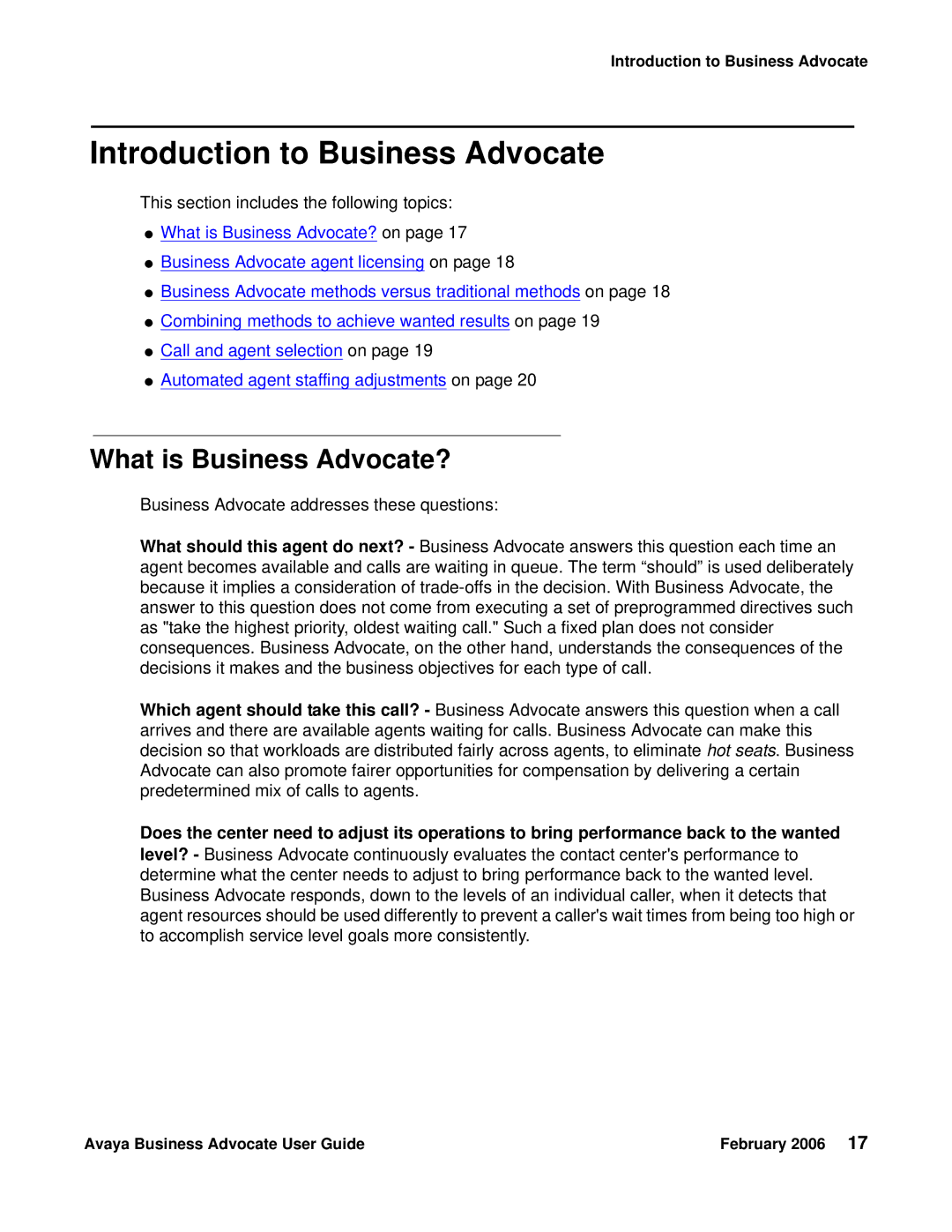
Introduction to Business Advocate
Introduction to Business Advocate
This section includes the following topics:
●What is Business Advocate? on page 17
●Business Advocate agent licensing on page 18
●Business Advocate methods versus traditional methods on page 18
●Combining methods to achieve wanted results on page 19
●Call and agent selection on page 19
●Automated agent staffing adjustments on page 20
What is Business Advocate?
Business Advocate addresses these questions:
What should this agent do next? - Business Advocate answers this question each time an agent becomes available and calls are waiting in queue. The term “should” is used deliberately because it implies a consideration of
Which agent should take this call? - Business Advocate answers this question when a call arrives and there are available agents waiting for calls. Business Advocate can make this decision so that workloads are distributed fairly across agents, to eliminate hot seats. Business Advocate can also promote fairer opportunities for compensation by delivering a certain predetermined mix of calls to agents.
Does the center need to adjust its operations to bring performance back to the wanted level? - Business Advocate continuously evaluates the contact center's performance to determine what the center needs to adjust to bring performance back to the wanted level. Business Advocate responds, down to the levels of an individual caller, when it detects that agent resources should be used differently to prevent a caller's wait times from being too high or to accomplish service level goals more consistently.
Avaya Business Advocate User Guide | February 2006 17 |
